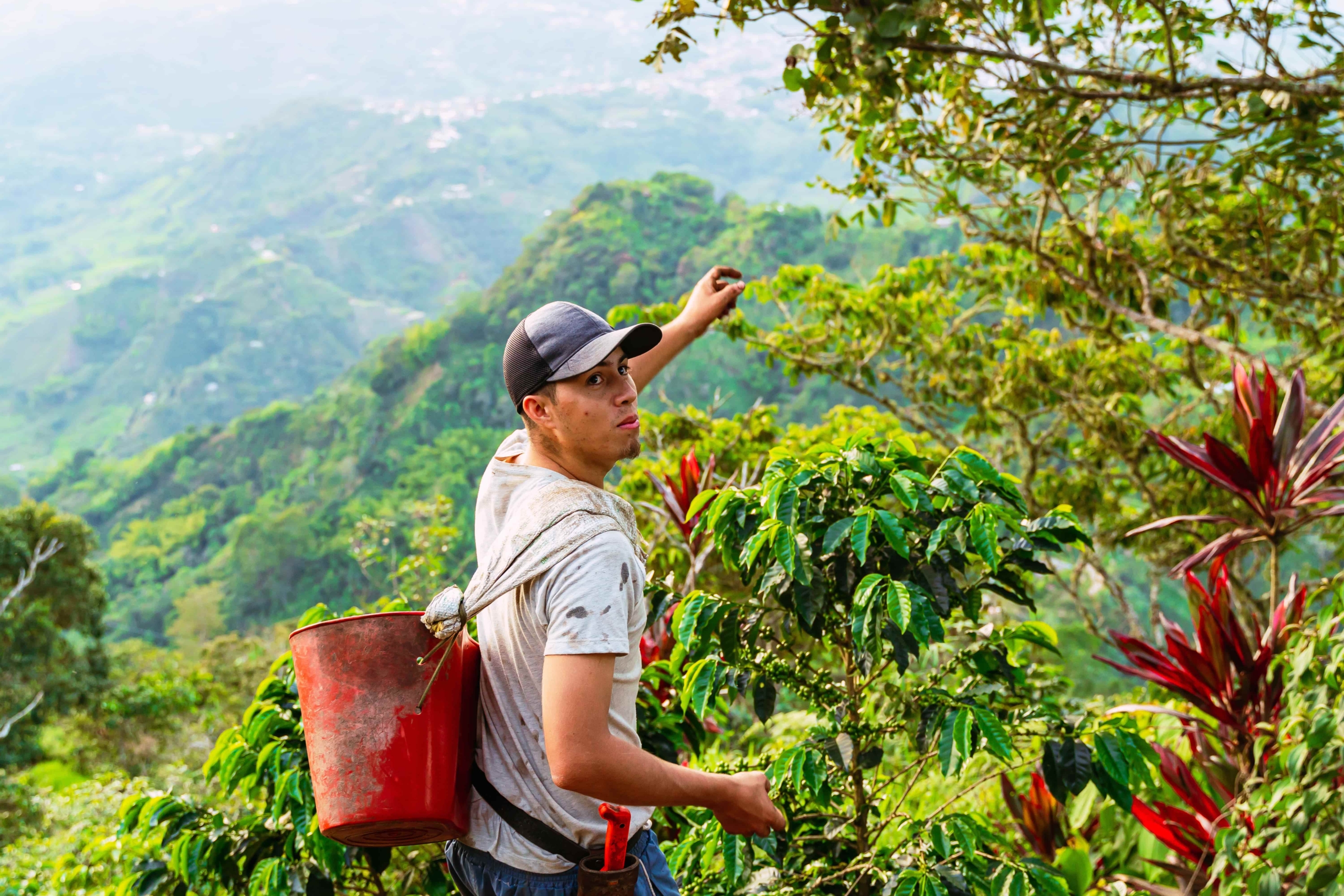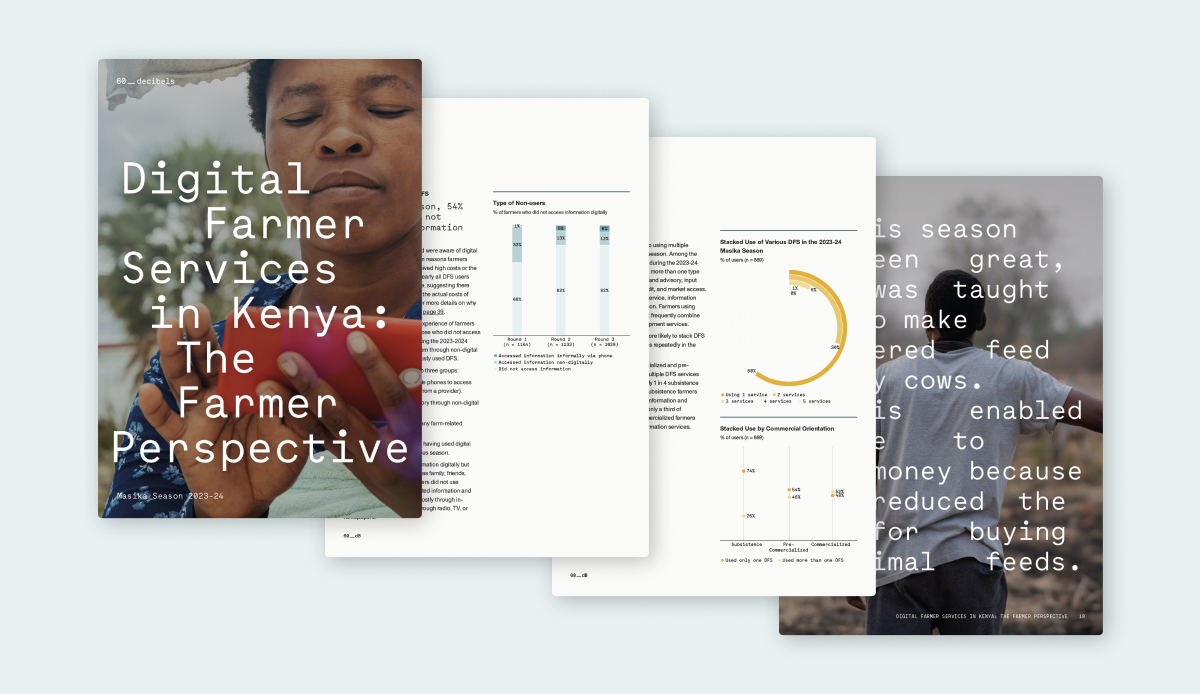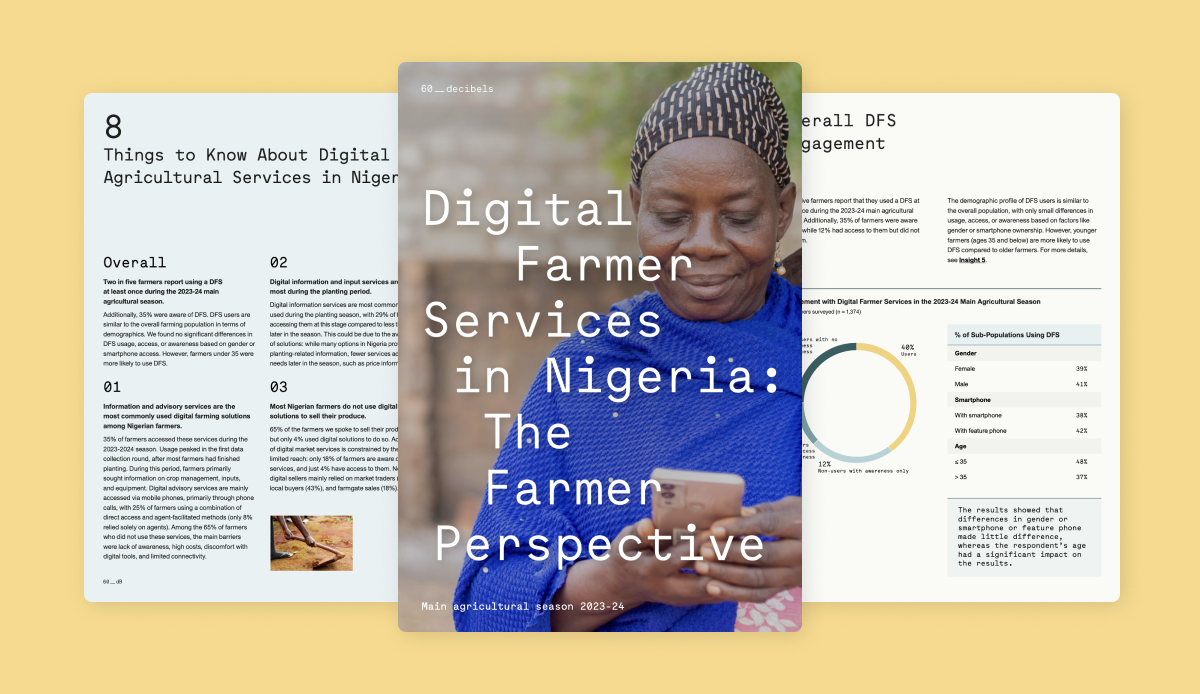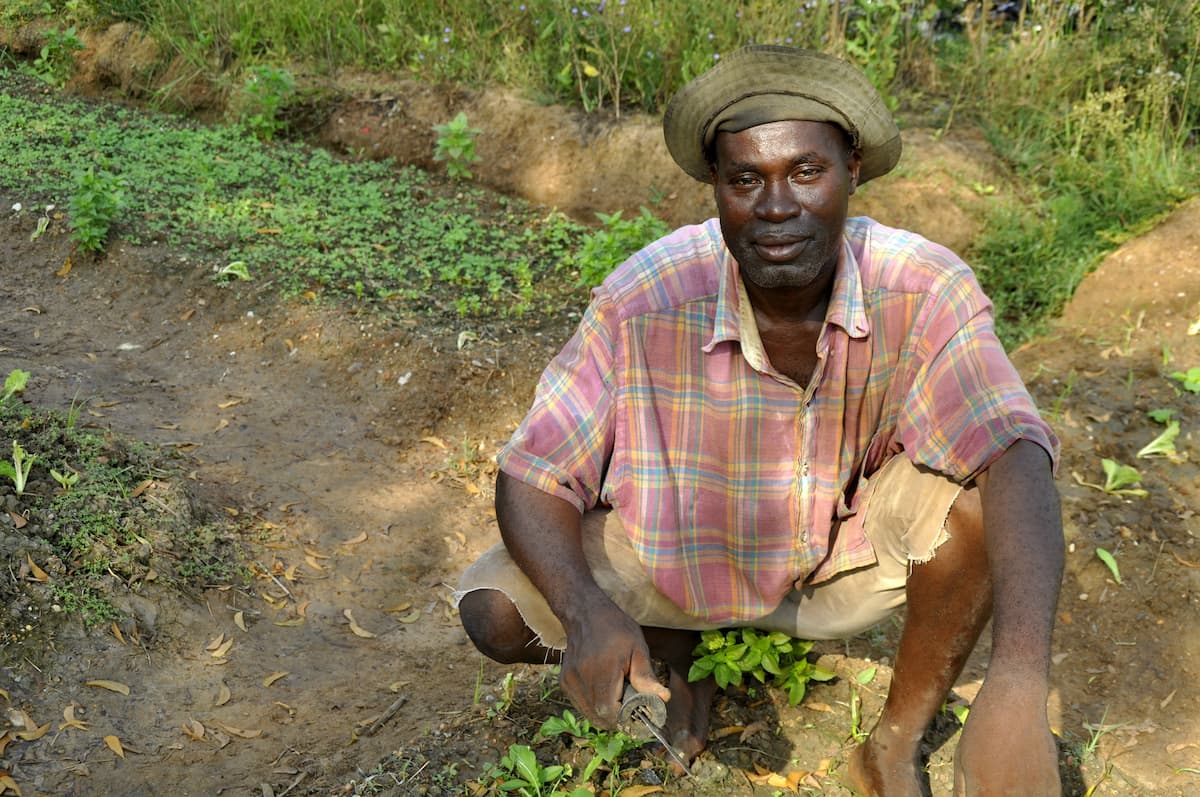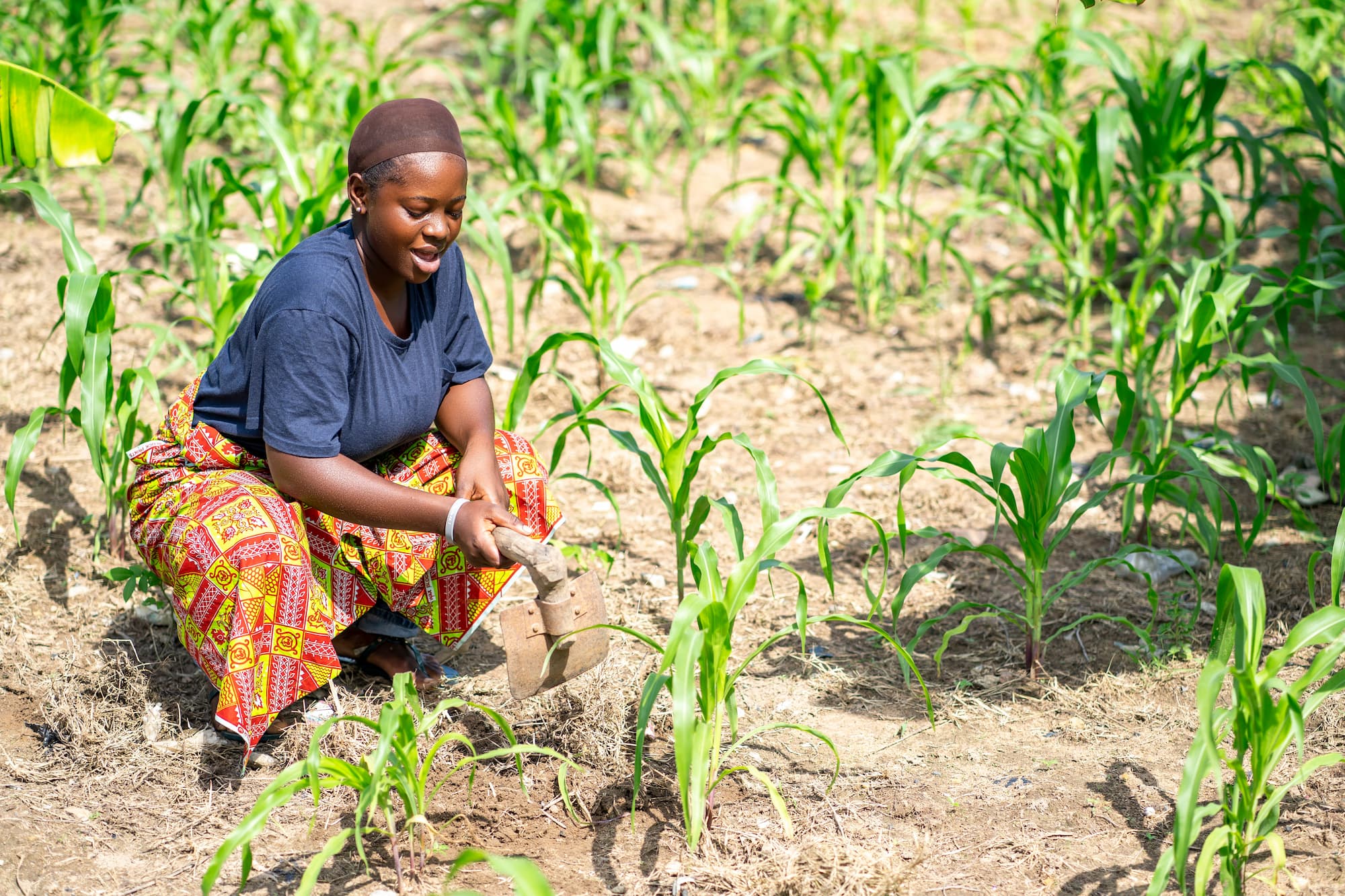
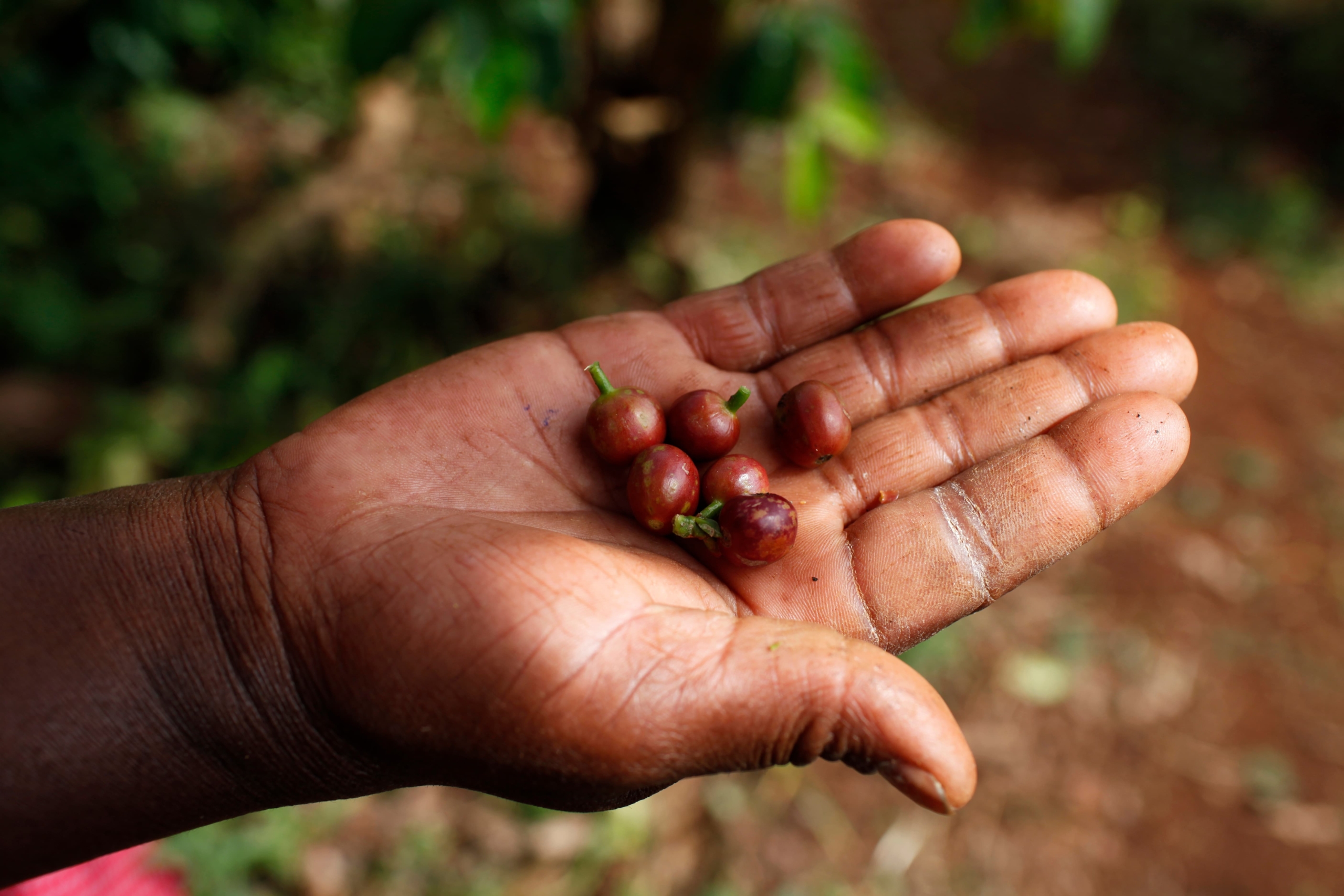
Kenyan Coffee Cooperative: Insights on Digital Payments for Farmers
As the coffee industry increasingly explores digital payments, it is essential to consider the experiences of coffee farmers and how this shift towards digitization affects their lives and livelihoods, taking into account the context of each country. By highlighting the voices of farmers, we aim to help stakeholders in the coffee value chain better understand whether and how digital payments and greater financial engagement can support their goals.
60 Decibels set out to understand the lived experiences of Kenyan coffee farmers selling to a small cooperative in Meru, Kenya. We spoke to 271 farmers who receive payments digitally to hear directly from them about what’s working — and what could be better — when they receive payments.
In Kenya, SACCOs (Savings and Credit Cooperative Societies) are member-owned, democratically run, local financial service providers that play a critical role in the financial lives of farmers, especially in rural areas where access to traditional banking is limited.
We spoke with farmers who sell their coffee to a cooperative, which operates several coffee processing facilities in Meru. These payments are facilitated by VunaPay, which acts as an intermediary that helps route payments from the cooperative to farmers. 60 Decibels conducted phone surveys with 271 coffee farmers paid by the cooperative.
91%
57%
39%
Key insights on Kenyan coffee farmers
Farmers are comfortable using both SACCO and mobile money accounts, though their use cases differ
The median tenure for which a farmer has been using their SACCO account is 15 years and 72% had access to a SACCO account before selling to the cooperative. However, farmers are more likely to actively use alternative financial tools such as mobile money over their SACCO account (83% vs. 39%). Besides receiving payments, SACCOs are predominantly used for savings and accessing credit. In contrast, mobile money has more short-term use cases such as transferring money to friends and family (88%), airtime top-ups (78%) and paying utility bills (64%).
Farmers are equally comfortable and confident using both their SACCO and mobile money accounts, with nearly all reporting that they ‘never’ require help using these tools and are ‘very confident’ in their usage.
Farmers expect to receive their payment earlier than they currently do. Timely payments can improve their overall payment experience
A typical farmer receives payments from the cooperative in their account after 5 months of selling their coffee but expect it to arrive in 2 months. Given the time it takes for the cooperative to sell the coffee in the export market, a longer-than-usual waiting period is expected. However, half of the farmers still rate the timeliness of their payments in the most recent season as poor. Additionally, 35% of farmers report borrowing money from others, as they waited for their payment. Farmers who received their payment in less than five months are more likely to rate their experience as good, compared to those who waited five months or longer (51% vs. 36%). Addressing the mismatch in payment timelines and expectations through clearer communication with farmers can mitigate farmer dissatisfaction.
Farmers expectations of the payment amount varies, either due to limited information on prices or deductions
The median payment received for coffee via SACCOs is KES 7,000. More than half of the farmers say the amount they received was below their expectations. This may be caused by a lack of awareness of the price at which their coffee is being sold at (58% of farmers) and costs incurred when cashing out their payment, which nearly all farmers reported. 93% report deductions, which on average account for 2.5% of the final payment amount. Unexplained deductions are also among the top self-reported drivers for farmers who rated their payment experience as fair or poor. Encouraging transparency by proactively communicating coffee prices and potential deductions to farmers can bridge these gaps.
Despite delays in payment, farmers are largely satisfied with their cooperative. But there is some room for improvement
9 in 10 farmers say they are likely to continue selling coffee to their cooperative in the future and would recommend the company to others based on their most recent payment experience. This is driven by reliability of market access, and the long-standing relationships they have with the cooperative, which fosters trust and familiarity. However, a quarter of the cooperative’s farmers report a challenge with their payment experience. Looking ahead, in addition to better prices, farmers want to see faster payments, better communication, and improved transparency on potential deductions.
In the future, there is an appetite for both SACCO transfers and mobile money as the preferred mode of payment among farmers
Existing trust and familiarity are key factors influencing farmers’ preference for SACCO over other payment methods. Additionally, farmers value the ability to access credit through their SACCO. That said, 4 in 10 farmers express a preference for mobile money payments for future seasons, primarily due to its convenient withdrawal process and lower associated deductions. Many farmers are already accustomed to this payment mode, with 68% reporting alternate income sources being paid via mobile money. When asked how their payment experience could be improved in the upcoming season, a proportion of farmers, particularly those under the age of 60, suggest offering mobile money as a payment option, further highlighting the growing demand for this mode.
